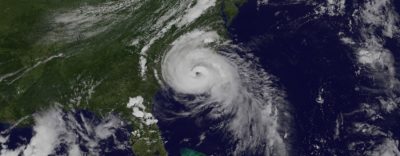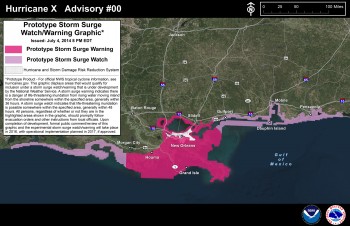Reprinted from the Outer Banks Voice.

Although the 2015 hurricane season got off to an earlier than normal start with Tropical Storm Ana affecting North and South Carolina, forecasters with the National Oceanic and Atmospheric Administration, or NOAA, say overall tropical weather activity in the Atlantic will likely be below-normal.
Supporter Spotlight
For the hurricane season, which officially runs from June 1 – November 30, NOAA’s Climate Prediction Center is predicting a 70 percent likelihood of 6 to 11 named storms, of which 3 to 6 could become hurricanes, including zero to 2 major hurricanes.
While a below-normal season is likely, there is also a 20 percent chance of a near-normal season, and a 10 percent chance of an above-normal season, the federal agency said in a news release Wednesday.
“A below-normal season doesn’t mean we’re off the hook. As we’ve seen before, below-normal seasons can still produce catastrophic impacts to communities,” said NOAA Administrator Kathryn Sullivan, referring to the 1992 season in which only seven named storms formed, yet the first was category 5, major hurricane Andrew that devastated South Florida.
While forecasters called for a near-normal to below-normal season in 2014, Hurricane Arthur hit the Outer Banks on July 4 as a category two storm, becoming the earliest documented landfall in state history.
But the season finished with no other tropical systems hitting the United States.
Supporter Spotlight
“The main factor expected to suppress the hurricane season this year is El Niño, which is already affecting wind and pressure patterns, and is forecast to last through the hurricane season,” said Gerry Bell, lead seasonal hurricane forecaster with NOAA’s Climate Prediction Center.

El Niño is defined by prolonged warming in the Pacific Ocean sea surface temperatures when compared with the average value. Typically, this anomaly happens at irregular intervals of two to seven years and lasts nine months to two years. Warm Pacific waters affect wind patterns around the globe. El Nino-induced winds in the western Atlantic tend shear tropical systems before than can develop into storm.
“El Niño may also intensify as the season progresses and is expected to have its greatest influence during the peak months of the season,” Bell said. “We also expect sea surface temperatures in the tropical Atlantic to be close to normal, whereas warmer waters would have supported storm development.”
Included in the outlook is Tropical Storm Ana, but its pre-season development is not an indicator of the overall season strength.
Ana’s development was typical of pre-season named storms, which often form along frontal boundaries in association with a trough in the jet stream.
This method of formation differs from the named storms during the peak of the season, which originate mainly from low-pressure systems moving westward from Africa, and are independent of frontal boundaries and the jet stream.
With the new hurricane season comes a new prototype storm surge watch/warning graphic from NOAA’s National Hurricane Center, intended to highlight areas along the Gulf and Atlantic coasts of the United States that have a significant risk of life-threatening inundation by storm surge from a tropical cyclone.

The new graphic will introduce the concept of a watch or warning specific to the storm surge hazard. Storm surge is often the greatest threat to life and property from a tropical cyclone, and it can occur at different times and at different locations from a storm’s hazardous winds.
In addition, while most coastal residents can remain in their homes and be safe from a tropical cyclone’s winds, evacuations are often needed to keep people safe from storm surge.
Having separate warnings for these two hazards should provide emergency managers, the media and the general public better guidance on the hazards they face when tropical cyclones threaten.
Also new this season is a higher resolution version of NOAA’s Hurricane Weather Research and Forecasting model, or HWRF, thanks to the upgrades to operational computing.
A new 40-member HWRF ensemble-based data assimilation system will also be implemented to make better use of aircraft reconnaissance-based Tail Doppler Radar data for improved intensity forecasts.
Retrospective testing of 2015 HWRF upgrades demonstrated a five percent improvement in the intensity forecasts compared to last year.
NOAA will issue an updated outlook for the Atlantic hurricane season in early August, just prior to the historical peak of the season.








